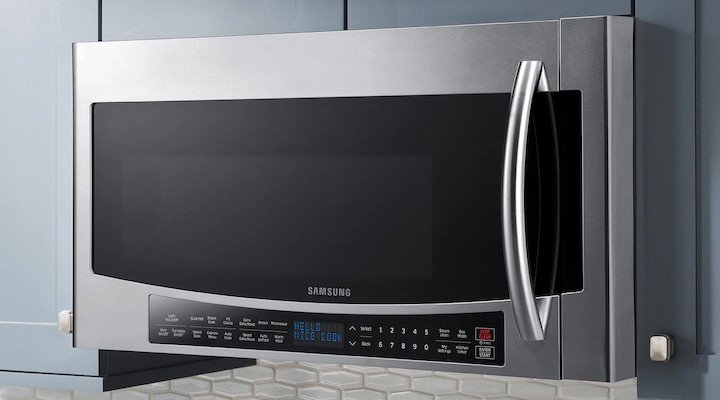
Error codes are like the smoke signals of the digital world, giving us clues about what’s happening inside our devices. For Samsung microwaves, the F1 error code typically points to a problem with the touchpad or control board. Think of it as your microwave’s way of saying, “Hey, something’s not quite right here!” Just like when your computer or phone acts up, a reset might be the magic trick that resolves the issue. But before we dive into the how-to, let’s get a better grasp on why this error occurs and what resetting can and can’t do.
Understanding Error Code F1
When your microwave flashes the F1 error code, it’s essentially a call for help, indicating a possible malfunction in the control panel. The control panel is the brain of your microwave, managing all the functions like setting the timer or choosing the right power level. Think of it like the steering wheel of your car; if it stops working, you can’t really drive anywhere. The F1 code usually suggests that there’s a problem with the touchpad or sometimes even the entire control board.
So, how does this happen? Over time, your microwave’s control panel might face wear and tear, or it could be affected by moisture or electrical surges. You know how your smartphone behaves oddly when it gets too much exposure to moisture or heat? A similar thing can happen here. These factors can cause the touchpad to become unresponsive or act as if a button is being pressed even when it’s not, leading to the notorious F1 error.
Knowing that the issue lies in the touchpad or control board helps narrow down the potential fixes, and this is where resetting enters the scene. A reset is like hitting the refresh button on a webpage – it clears out any minor glitches and helps the system start fresh. But before we proceed with resetting, let’s understand what it involves and what results you can realistically expect.
How to Reset Your Samsung Microwave
Now that we know what F1 means and why it shows up, let’s tackle how to reset your microwave to see if it resolves the issue. Resetting your microwave is akin to giving it a gentle pat on the back and saying, “Let’s start over and see if we can work this out.” It’s a simple process, but being methodical and safe is key.
First, make sure to unplug your microwave from the power source. This is like putting your device to sleep for a moment. You’ll want to leave it unplugged for at least a minute or two. Unplugging helps clear any temporary glitches that might have caused the F1 error in the first place. It’s similar to turning off your computer when it’s acting up. After waiting, plug it back in and turn it on.
Once it powers up, check to see if the error code is gone. If the code is no longer flashing, try using the microwave to make sure it’s functioning normally. If it’s working well, fantastic! The reset might have done the trick. But, it’s important to note that while resetting can solve many minor issues, it’s not a guaranteed fix for hardware problems. If the error persists, we might need to consider other alternatives.
What If Resetting Doesn’t Solve the Problem?
So, you’ve tried resetting and the pesky F1 error is still there. What’s next? Sometimes, even after a reset, the underlying issue remains, constantly rearing its head like a bad penny. This usually means the problem might be a bit more serious and could require a closer look at the internal components, like the control board or touchpad.
At this point, it’s advisable to contact Samsung customer support or a qualified appliance repair technician. These professionals can diagnose whether the control board needs repair or if the touchpad should be replaced. It’s like calling a mechanic when your car’s dashboard warning light won’t turn off despite changing the oil yourself.
In the meantime, take preventive measures to avoid similar issues. Keep the microwave’s control panel dry and clean, akin to keeping your car’s dashboard free of spills and dust. Avoid using the microwave during power surges or thunderstorms, just like you wouldn’t use a computer during a lightning storm. These steps can minimize the risk of error codes popping up unexpectedly.
Preventing Future Error Code F1 Issues
With the F1 error code behind you, you might be wondering, “How can I stop this from happening again?” Prevention is often better than cure, and maintaining your microwave is no different. By adopting some simple habits, you can keep those pesky error codes at bay and extend the lifespan of your microwave.
Ensure your microwave is installed in a well-ventilated area, away from excessive moisture or heat sources. Imagine it as giving your microwave its own personal space, just like keeping a plant in a sunny spot with enough air. This helps prevent moisture from seeping into the control panel, which is a common culprit for errors like F1.
Regularly check the touchpad and control panel for any signs of wear, damage, or spills. Clean them gently with a soft, damp cloth, making sure it’s just damp, not wet, to avoid any moisture seeping inside. Think of it as giving your microwave a spa day, keeping it clean and functional.
Finally, consider investing in a surge protector. Power surges can be like unexpected jolts of electricity that can disrupt and damage your microwave’s delicate circuitry. A surge protector works like a buffer, absorbing excess voltage and protecting your appliance from electrical mishaps.
By following these tips, you can minimize the chances of encountering the F1 error code again and enjoy the convenience of a smoothly running Samsung microwave. If you do face issues, now you’re armed with the knowledge to troubleshoot and get your microwave back on track.